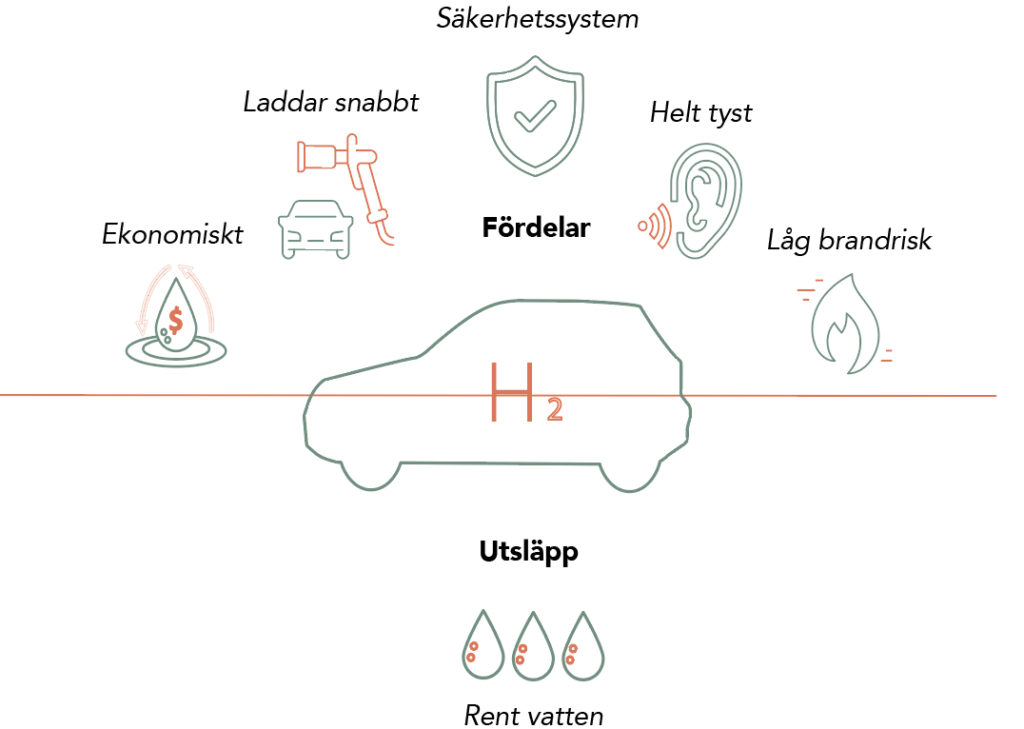Hydrogen can be used in a variety of applications. We often hear about hydrogen as a vehicle fuel, and transport in particular is an area where hydrogen can reduce the environmental and climate impact in a significant way.
In order to phase out fossil fuels in the transport sector, the use of hydrogen is being developed in all types of transport. There are already fuel cell trains from France’s Alstom in service in northeastern Germany. The Swedish train network is largely electrified, but on the routes that run with diesel locomotives, there is the possibility of replacing these with fuel cell-powered trains. An example is the Inland Line between Mora and Gällivare, where the possibility of running with fuel cell trains is being investigated.
In aviation, there are initiatives for hydrogen-powered aircraft. For example, the British plane Zeroavia was flown with fuel cell technology from Swedish PowerCell. However, the use of hydrogen for international aviation is further in the future.
In shipping, several initiatives are underway to reduce emissions. Due to different needs depending on lifespan, operation and energy consumption, various alternatives are being investigated. Such as battery, methanol, ammonia, HVO, LBG, hydrogen and electrofuels. There are several initiatives underway to use hydrogen in shipping, including for ferry traffic in Norway.
Hydrogen used as vehicle fuel basically results in no other emissions than pure water vapor. In the same way that the environmental impact of electric cars depends on how the electricity has been produced, it is determined for fuel cell cars by how the hydrogen has been produced and distributed. All the hydrogen we use in Scandinavia comes from renewable sources.
The fuel cell system is about twice as energy efficient as an internal combustion engine if used in a regular car. This means that with the same amount of energy, the mileage with a fuel cell car is twice as long as with a combustion engine. Modern batteries have even less energy loss than fuel cells, but they take time to charge and are bulky and heavy.
This is how an electric car with fuel cells works
The most common technology solution in hydrogen-powered cars is to have a battery and a fuel cell that complement each other. Together, they form a combination that provides the same high level of comfort and safety as today’s conventional cars. Another advantage of fuel cell cars is that, like other electric vehicles, they are very quiet. If traffic in the future is dominated by vehicles like this, it would have a fantastic impact on our local environment, both in terms of air quality and noise. Several major car manufacturers are now selling mass-produced fuel cell cars.

Major expansion of hydrogen filling stations
More and more hydrogen filling stations are planned to be established in the coming years. For example, from the Electrification pilot from the Swedish Energy Agency, but also other investment support from, for example, the EU and Klimatklivet enables a faster expansion of the infrastructure. Around 60 hydrogen filling stations are planned to be built in Sweden in the coming years. The map illustrates existing stations in Sweden, Norway and Denmark.
















